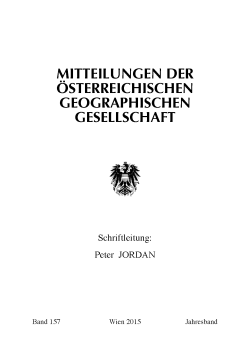
Mitteilungen der Österreichischen Geographischen Gesellschaft Band 157/2015, pp. 151-168, 2016/02/16
157. Jg. (Jahresband), Wien 2015
In this paper, we report on the Zipsers’ community in Vişeu de Sus/Oberwischau, Romania. This ethnic group is one of the most relevant examples out of the German-speaking ethnic groups in Eastern and Southeastern Europe that living together and sharing space with other ethnic groups lead to characteristic adaptations and influence the appearance of another ethnic substratum visible through its own culture (language, tradition, religion, etc.). Our aim was to show that multiculturalism may in some cases, such as the Zipsers’ in Vişeu de Sus/Oberwischau, support identity and traditional culture preservation. The material of our research rested on respondents’ autobiographies and on ethnographic inquiry as resulted from interviews, questionnaires and observation, on statistical data from censuses, on information from earlier studies and on our theoretical reflection. Results showed that the specificity of this ethnic group and especially of its perpetuation was exactly the multicultural substratum that enabled respecting the Other, communication and help-based ethnic relationships, that is “living together”. We concluded that the Zipsers’ construction of ethnic identity was done depending on the Other, as a result of social transformation and of fragmenting triggered by political events.
Keywords: Zipsers, identity, interethnic relationships, qualitative research methods, ‘the Other’, multiculturalism